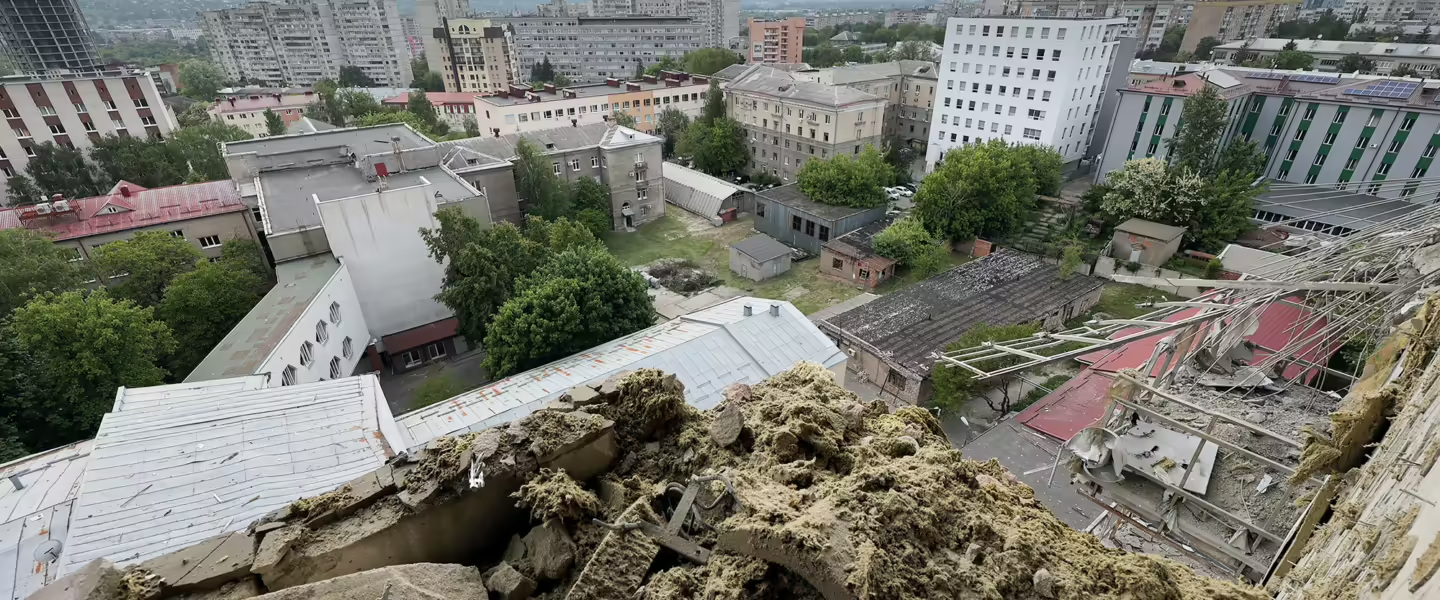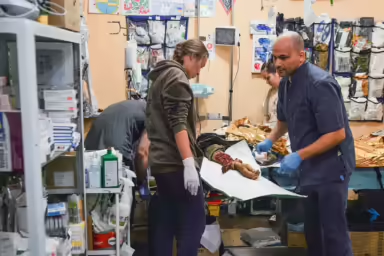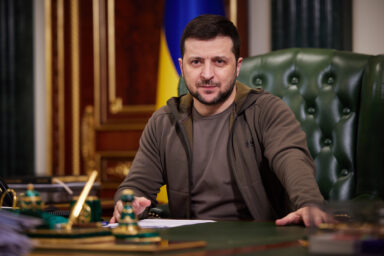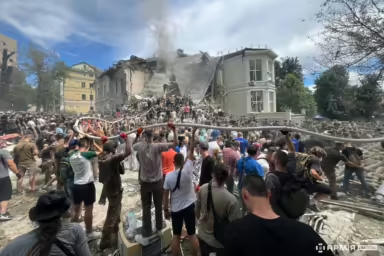Just a few miles from the Russian border, Ukraine’s second largest city, Kharkiv, is threatened with potential destruction by Russian artillery.
|
Listen To This Story
|
In less than a week, more than 30,000 Russian troops and nearly 400 tanks have crossed into Ukraine headed towards the country’s second largest city, Kharkiv. The Russian forces are backed by significant air power, leaving the population vulnerable to glide bombs launched by Russian aircraft. Ukraine has been unable to defend itself against these largely because it lacks air superiority and is fast running out of ammunition due to delays in the US Congress. Several villages have already had to be abandoned. “It’s impossible to predict what is going to happen,” says Artem, a one-time journalist who is now enlisted in the Ukrainian army. ‘We will know more in a few days.”
Until now, Ukrainian forces, weakened by months of attrition, have managed to contain Russian advances and have evacuated over 7,500 residents from the oblast (administrative region) under attack. At the beginning of the Russian offensive, Ukraine’s military intelligence chief, Kyrylo Budanov, announced that Ukrainian forces might be on the brink of destruction. Budanov quickly corrected that assessment, declaring that “the situation is not catastrophic,” and adding that the situation appeared to be stabilizing.
On May 14, Oleh Syniehubov, governor of the Kharkiv Oblast, reported “active firefights” on the northern outskirts of Vovchansk, which seems likely to be overtaken by the Russians. Most of the town’s previous 6,000 inhabitants had already left, and only a few hundred people, mostly elderly residents who refused to leave, stayed behind.
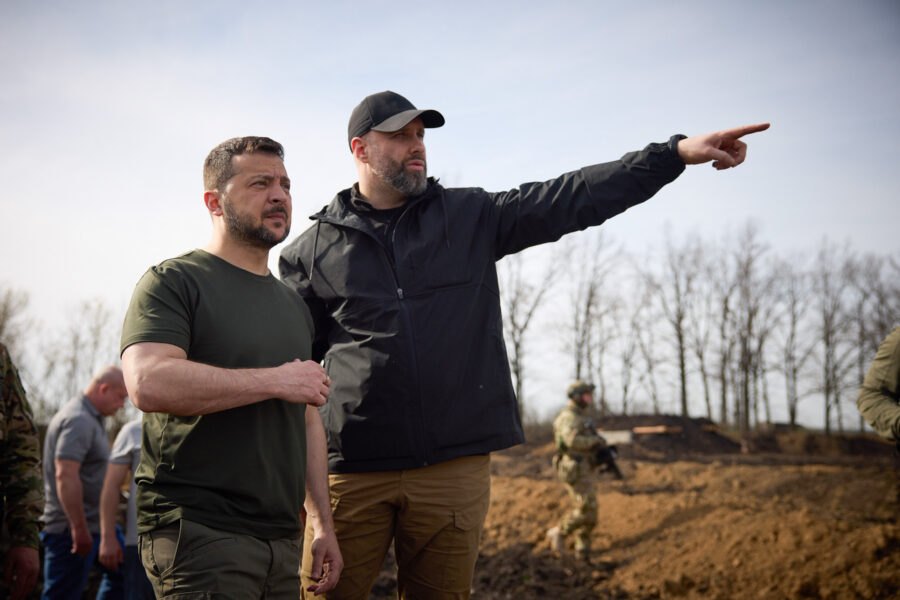
No Risks for Kharkiv
“We expected a new offensive,” Artem explains, adding that Ukraine had time to prepare for it. “I don’t think the Russians will be able to take Kharkiv,” he says.
With its 1.6 million inhabitants, Kharkiv is the country’s second-largest city. It is located just 18 miles from the Russian border, yet despite its closeness to Russia, the city does not appear to be in danger of falling. “They don’t have enough men,” says Artem.
The Institute for the Study of War, an American defense policy think tank, made a similar assessment, noting that at least at this point, the Russians don’t appear to be trying to encircle Kharkiv. Instead, they are more likely to try to establish a foothold that lets them demolish much of the city with artillery.
The Institute also pointed out that, until now, Ukraine has had its hands tied by US restrictions which stipulate that American weapons cannot be used to attack Russian forces on Russian territory. The restrictions are especially relevant if they give a free pass to Russian troops massed just across the border a few miles from Kharkiv. During US Secretary of State Antony Blinken’s brief trip to Kyiv, a reporter asked whether the restrictions, intended to keep the war from escalating beyond Ukraine, remained in effect. Blinken replied, “We have not encouraged or enabled strikes outside of Ukraine, but ultimately Ukraine has to make decisions for itself about how it’s going to conduct this war, a war it’s conducting in defense of its freedom, of its sovereignty, of its territorial integrity. And we will continue to back Ukraine with the equipment that it needs to succeed, that it needs to win.”
As some reporters on the scene saw it, Blinken might have been greenlighting a possible attack into Russian territory by leaving the decision up to Ukraine. Blinken appeared to be saying that the US would continue to back Ukraine regardless of what happened. That looked like a subtle change in US policy.
Whether or not Blinken was trying to send a signal, Valdimir Putin reacted by stating flatly that Russia has no intention of trying to capture the city, and only wants to create a buffer zone to protect Russian territory. A number of defense policy analysts noted that Putin’s remarks were no guarantee that the Russians won’t still try to overrun and capture the city.
It is less than clear what Russia’s goals in the Kharkiv region really are. The Institute of War suggested that the real Russian aim might be to draw Ukraine’s troops away from other locations that ultimately prove to be more strategically important.
Victor Kevluk, a former Ukrainian Army colonel, who is currently an analyst at the Defense and Strategy Center in Kyiv, is skeptical about Russian chances for success. “The Russians failed to break through the front in the first 12 hours,” Kevluk says. “That means that we have sufficient strength in place.”
None of that seems likely to stop Putin from continuing to order wanton destruction. Bolstered by his recent “reelection,” Putin has reiterated his conviction that Russia is engaged in “an existential war against Nazism.”
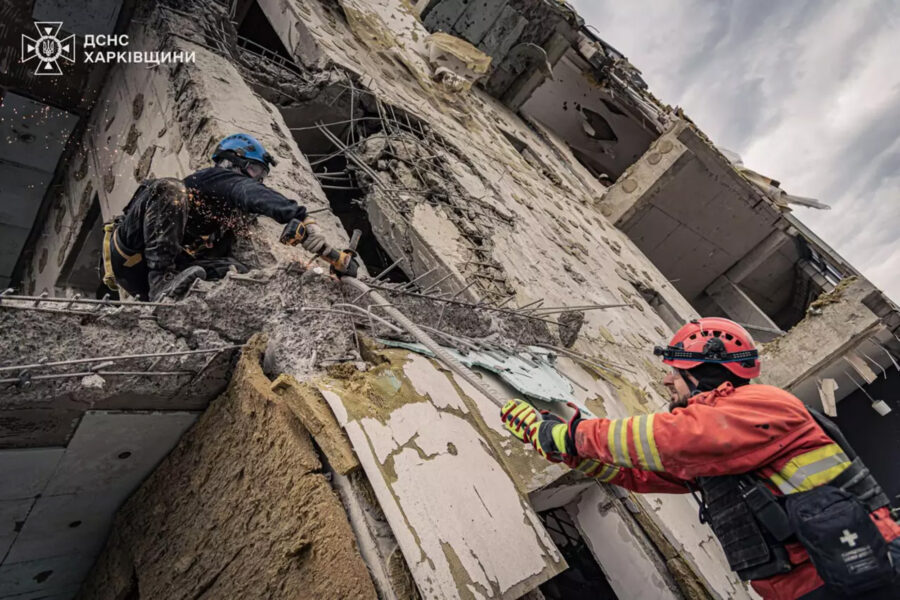
Ramzan Kadyrov, Putin’s surrogate in Chechnya, speculated that Moscow’s goals in Ukraine were the capture of Odesa and Kharkiv in the coming months.
Ukrainians remain unconvinced. “It’s too big a bite for a Russian army already struggling to advance on the entire front,” argues Ihor, a Ukrainian soldier in the 67th brigade.
Ihor nevertheless remains concerned about a possible Russian breakthrough near Kharkiv that would allow them to position their artillery within range of the city.
“If that happens, Kharkiv could become the next Mariupol,” says Artem.
The Russians are primarily relying on Soviet-era D20 and D30 howitzers which have a maximum range of around 12 miles. To bombard the city itself, they would need to break through Ukrainian lines and consolidate their forces at the outskirts of Kharkiv.
A Diversion
Kevluk explains that by threatening Kharkiv, the Kremlin may also be trying to pin down Ukrainian troops and prevent reinforcements from reaching Chasiv Yar, Siversk, or Ocheretyne, where Ukraine is currently losing ground.
“We certainly won’t be able to send reinforcements, but we won’t have to strip the eastern or southern front,” says Kevluk. “The Russians attacked the north with seven battalions. To defend ourselves, we only need three to four battalions, which we already have.”
“The Russians are also testing our resistance to see where we might yield,” Artem says, “but so far, all their attempts have been stopped.”
Artem also thinks that the Kremlin may be trying to establish a buffer zone to protect Russia’s Belgorod region.
Located about 6 miles from the Ukrainian border, this oblast of the Russian Federation has been repeatedly penetrated by tactical groups of the Ukrainian army, carrying out sabotage missions. “Putin has been weakened by these incursions,” Artem says. “He must absolutely put an end to them.”
Despite the fog of war, fear, and doubt, Ihor and Artem remain confident. “The Russians know we are weakened,” Ihor says. “They know we are waiting for Western aid. If they want to strike a significant blow, they must do it now. We just need to hold on for a few more weeks.”
